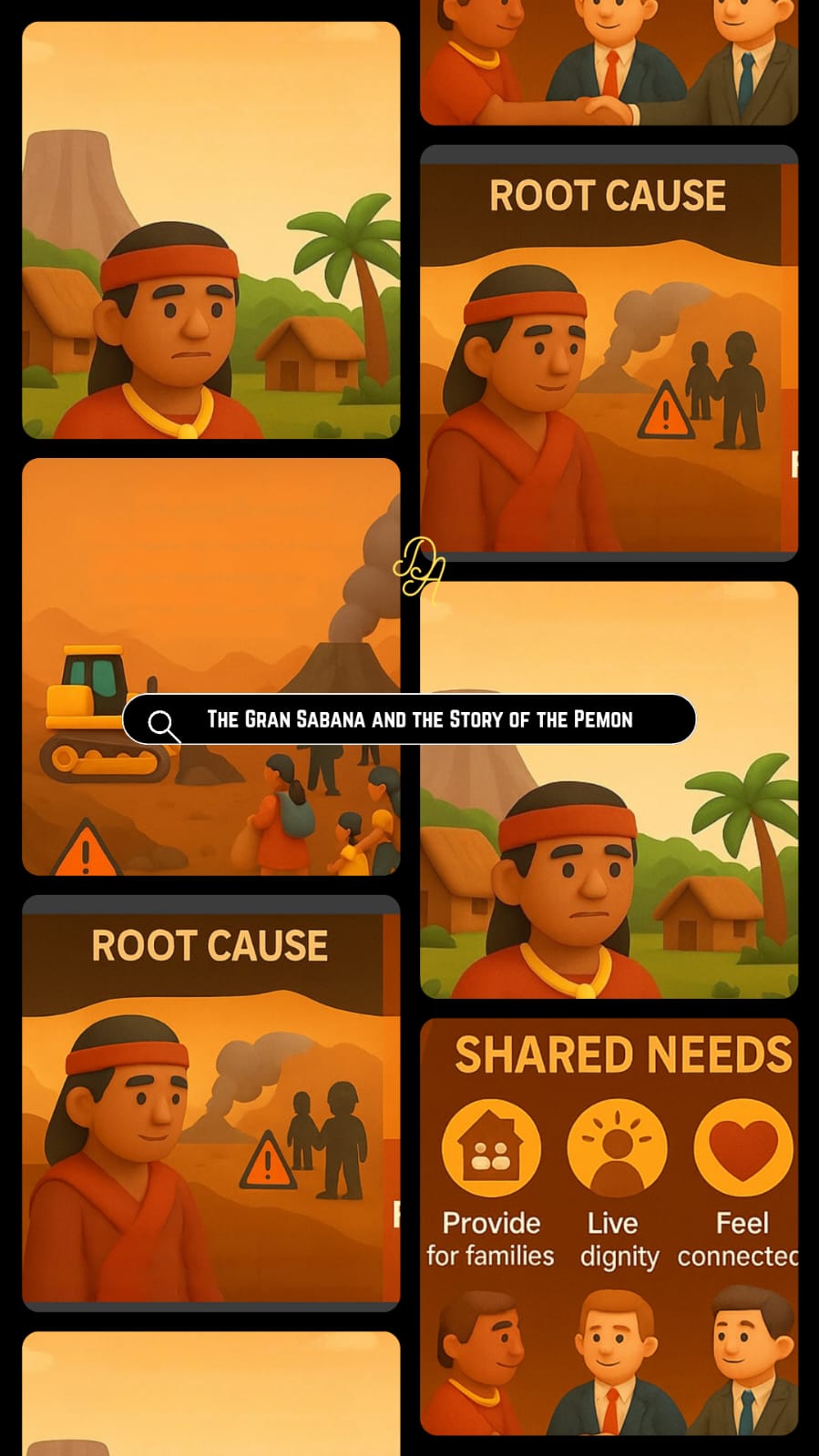
In the southeast of Venezuela lies the Gran Sabana plateau, a vast land of sweeping savanna grasslands (from which it takes its name), dotted with rivers, forests and waterfalls, and overseen by dramatically rising table-top mountains called tepuis.
This land is home to the Pemon, an indigenous community whose livelihoods depend on tourism around the waterfalls and tepuis, shifting agriculture, fishing in the rivers, and hunting in the forests. But for the Pemon, these mountains are not merely sources of livelihood, they are sacred. The tepuis, in particular, are seen as their ancestors and grandparents, deeply woven into their cosmology.
This quiet region, however, began to simmer in 2016, when the Venezuelan government launched the Arco Minero del Orinoco project, opening vast areas, including parts near the Gran Sabana, to mining for gold, diamonds, coltan, and bauxite. No meaningful consultation was held with the Pemon before the project began. As mining expanded, illegal armed groups also entered the region, often exploiting or displacing local communities. Reports have documented violent clashes, with Pemon families forced to flee the lands they have called home for generations.
This is just one story. The world is filled with similar stories where governments and societies clash with indigenous peoples over control of natural resources.
Why does this keep happening?
While the details vary, the root cause, I believe, lies in our lack of empathy towards indigenous people. We tend to see only the resources in these regions— the land, the minerals, the wood— and not the people who live there. There’s nothing wrong in wanting to use resources for economic growth. After all, economic growth can create opportunities for everyone, including indigenous communities.
The problem arises when we start seeing the people living in these resource-rich areas as obstacles to be managed, rather than as partners in development, and when we ignore the environmental consequences of our actions.
Perhaps part of the reason is distance. These communities live far from the centers of power. But the deeper reason, I think, is the difference. Their lifestyles, livelihoods, and worldviews differ from ours, so we fail to identify with their fears. The fear of losing their land, their way of life, or, as in the case of the Pemon, seeing the mountains they consider sacred being drilled.
Also Read: Difference is Natural, Exclusion is Not
But at the heart of it, human needs are the same everywhere. Everyone wants to feed their family, live with dignity, and feel connected to something greater. Most people fear sudden change. These shared emotions are what bind us.
So, instead of treating indigenous communities as irritants, can we treat them as partners? Can we listen with sensitivity? Can we reassure them that we wish to grow with them, not at their expense?
Will this resolve every conflict?
Not immediately. But it will create the trust and empathy that form the foundation for lasting solutions.
Lack of empathy deepens divides. Acknowledging our shared humanity can begin to heal them.
Do you think this approach can truly help in resolving such conflicts? Or is it too idealistic?
Sources
- Gran Sabana
- Pemon
- Shifting cultivation and hunting across the savanna-forest mosaic in the Gran Sabana, Venezuela: facing changes
- UNHCR helps Indigenous Venezuelans to stay on their lands
- Pemon conflict
- Orinoco’s Mining Arc: An environmental crime with global effects – Luis Palacios
- Venezuela: Violent Abuses in Illegal Gold Mines

Pingback: Difference is Natural, Exclusion is Not - Diss Advantage